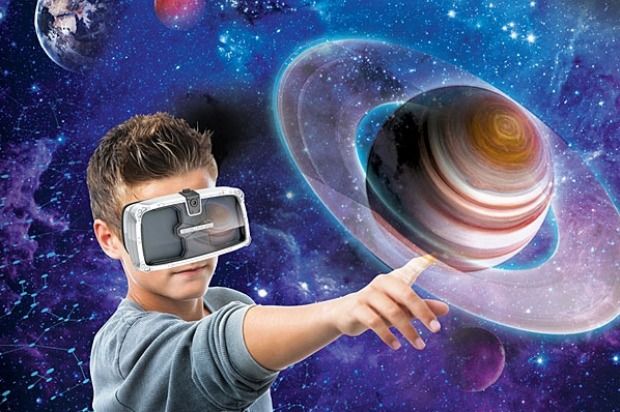I have never used AR and VR as a teacher or as a student. However, I have experience VR in an amusement park. For me, it definitely was one of a kind experience. Experiencing something beyond imagination was surreal and illuminating at the same time. It felt like I stepped into some kind of parallel universe which is impossible in real life, but technology-enabled me to gain the experience and understand how it feels. It is actually like a portal that draws you to a different world, a world of experience. This provoked me to think about how phenomenal it would be if VR was implemented in education wherein students were taken on a trip to a whole new dimension which is otherwise impossible to recreate in reality. For instance, teaching about the solar system, galaxies, milky way, and universe would be so much more exciting with VR where students can see for themselves and comprehend better. I heard about AR when a very popular mobile game came into the picture. The game was engaging to a point that it became a big concern for parents. This makes me ponder, we as teachers can make our classes as engaging with the help of these tools.
I as an educator strongly believe that more the students are engaged the more they learn. As Eckhaus and Davidovitch (2019) stressed that teachers who possess sound knowledge of modern tools and can successfully implement these tools in class, enhance the teaching quality as well as intensify student’s learning. Hence, I as an instructor will attempt to be well versed with the latest trends in order to provide a wonderful learning experience to my students. These modern pedagogical tools align with cognitivism learning theory wherein the visual as well as the graphical representation of different concepts through AR and VR helps students to build new knowledge based on their past understanding.
“The technology is becoming an integral part of the pedagogy” (Geladze, 2015, p.68). Instructors play a crucial role in incorporating modern technologies in the classrooms to familiarize students with the latest trends. Teachers face many challenges in the successful application of technologies in teaching. Various factors that act as a bottleneck in the effective implementation of technological tools in the classroom by teachers include lack of technological knowledge and proficiency, accessibility, and phobia for using novel technologies (Billman, Harding, and Engelbrecht, 2018). Due to these technical barriers, instructors fail to deploy modern technologies profusely. However, teachers bearing an optimistic learning attitude can subdue these challenges. Also, these tools undoubtedly come at a handsome price which certainly contributes to one of the biggest challenges in its utilization. The educational institutions should take appropriate measures to provide favorable infrastructure as well as teacher training workshops should be conducted to provide a technology-oriented environment for students.
Billman, A., Harding, A., & Engelbrecht, J. (2018). Does the chalkboard still hold its own against modern technology in teaching mathematics? A Case Study. International Journal of Mathematical Education in Science and Technology, 49(6), 809–823. Retrieved from http://search.ebscohost.com.ezproxy.tru.ca/login.aspx?direct=true&db=eric&AN=EJ1183366&site=ehost-live
Eckhaus, E., & Davidovitch, N. (2019). Technology-supported teaching: Technological progress or a sham? European Journal of Educational Research, 8(3), 697–702. Retrieved from https://search.ebscohost.com/login.aspx?direct=true&db=eric&AN=EJ1222278&site=eds-live
Geladze, D. (2015). Using the Internet and computer technologies in learning/teaching Process. Journal of Education and Practice, 6(2), 67–69. Retrieved from http://search.ebscohost.com.ezproxy.tru.ca/login.aspx?direct=true&db=eric&AN=EJ1083835&site=ehost-live


Thank you Sarabjit for sharing your personal experiences and educational philosophies regarding the implementation of Augmented and Virtual Reality!
I can appreciate and competely agree with your statement, “I as an educator strongly believe that more the students are engaged the more they learn”. I also believe that all children have the capacity to learn and a general curioisity about the world around them, so our job, and the trick, it is to find ways to connect their intrinsic desire to learn with what they are interested in learning more about.
Using Virtual Reality (VR) as a means to study the universe is a perfect example of that. Being there in reality is a very unlikely occurrance for most of us, But if you do have the ability to experience just a “taste” of what space might actually look like, or feel like, it leaves you and the students “hungry” for more. We all just need to be given the tools or “ingredients” to succeed.
Kind Regards,
Keri